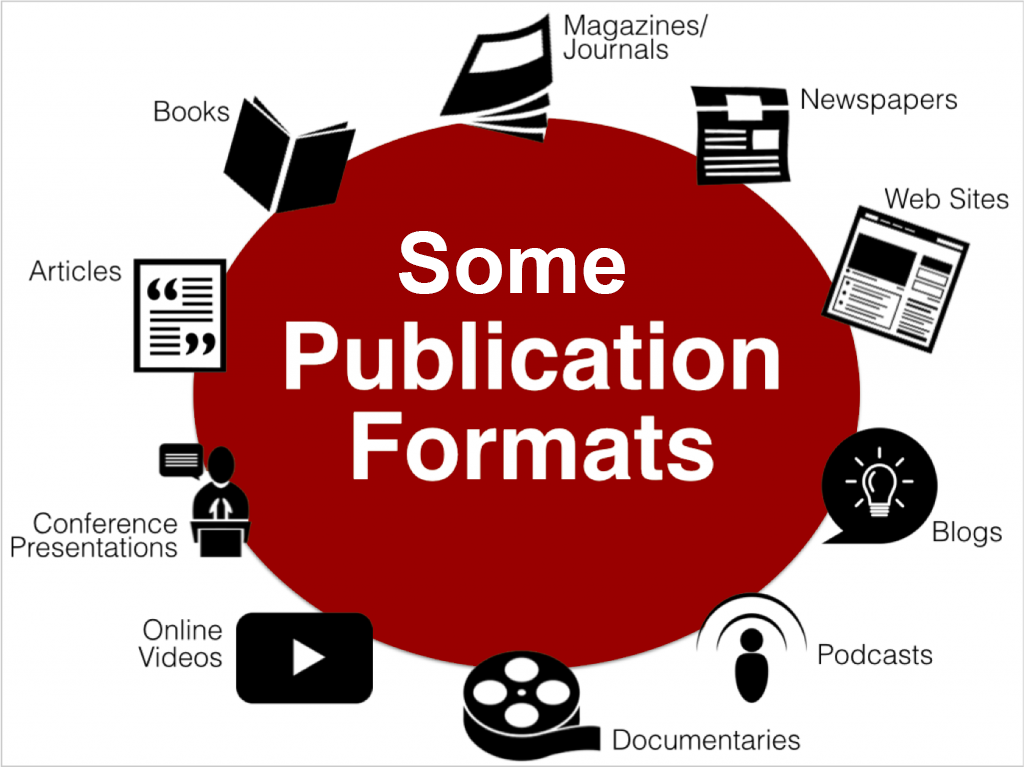12
We can also categorize sources by publication format because the time and effort required to produce any one type of information will dictate the depth, coverage, accuracy, validity, and reliability of the source produced. Those sources that get produced later in the information cycle/timeline have the benefit of sources that came before it to be taken into consideration.

Sources in particular formats simply cannot exist until there has been enough time for people to create them. The result is that the sources that are created toward the end of the information lifecycle may come to very different conclusions about the event than did those sources created early on.
Sometimes the information presented in the later formats is more valid and reliable than what is in those produced earlier.
A very good example is that conclusions about the Columbine High School shooting in 1999 and the causes of that tragedy reached by books—which took years to complete after the event—were likely to be very different than the conclusions reached by news coverage created early on. For instance, many early reports concluded that the two teens responsible for the shooting had been shunned by their classmates and that it was the pain of their exclusion that had moved them to take revenge. Consequently, many K-12 schools nationwide took steps to try to ensure that all students felt included in their student bodies. But more time-intensive reportage concluded that the boys were not shunned (one had had a date for prom activities just days before) and that it was mental illness that made them kill their classmates.
Information Cycle Video — A Refresher
This video explains what kinds of information sources about an event can exist at any point in time during and after that event.
[iframe src=”https://player.vimeo.com/video/175421451″ width=”640″ height=”360″ allowfullscreen=”allowfullscreen”]
A Closer Look at Common Formats
Books – Usually a substantial amount of information, published at one time and requiring great time and effort on the part of the author and a publisher.
Periodicals– Published frequently, containing lots of articles related to some general or specific professional research interest; edited.
- Newspapers – Each is usually a daily publication of articles about events of social, political and lifestyle interest.
- Magazines – Popular sources that are more extensive than newspaper sources and that develop the initial story more; more detailed, feature articles. Primarily written by journalists.
- Professional/Trade – Professional or trade journals (such as Fire Chief, Chemical Week, or Air Conditioning, Heating, and Refrigeration) are meant for people in a particular profession or industry, and are often accessible through a professional organization. Staff writers or other professionals in the targeted field write these articles at a level and in language to be understood by those in the profession.
- Scholarly Journals – Written by academics or scholars who have a more advanced degree within the academic discipline discussed. Articles in these sources are peer reviewed for validity, accuracy, use of proper methodology, etc. Extensively supported by outside references and sources. Publishing cycle is less frequent, from a monthly basis, bi-monthly, quarterly, or annually.
Open Websites – Digital items, each consisting of multiple pages produced by someone with technical skills or the ability to pay someone with technical skills. Websites are sources that can be of little value or high value, depending on the individual source. Websites can contain scholarly sources but these are harder to find. One type of websource is the Open Access journal source that contains academic or scholarly source that can also be peer-reviewed (or not) that can be of similar quality to scholarly sources found in the deep web of library databases.
Note: When evaluating any open web source, it is important to use your most critical and discriminating evaluation skills to determine whether it is credible, reliable, authoritative, accurate, relevant, and useful.
Tip: Evaluating Articles
Evaluating whether articles are credible enough for your information need is similar to evaluating any other source. There’s more information on evaluating in Evaluating Sources.
Conference Papers – Written form of papers delivered at a professional or research-related conference. Authors are generally practicing professionals or scholars in the field.
Blogs – Frequently updated websites that do not necessarily require extensive technical skills and can be published by virtually anyone for no cost to themselves other than the time they devote to content creation. Usually marked by postings that indicate the date when each was written.
Documentaries – Works, such as a film or television program, presenting political, social, or historical subject matter in a factual and informative manner and often consisting of actual news films or interviews accompanied by narration.
Online Videos – Short videos produced by anybody, with a lot of money or a little money, about anything for the world to see. Common sites for these are YouTube and Vimeo.
Podcasts – Digital audio files, produced by anyone and about anything, that are available for downloading or streaming. Depending on any particular podcast source, you will need to evaluate on the criteria mentioned here, in the chapter on evaluating sources, as well as the resources provided to you on how best to evaluate sources to support a claim.
